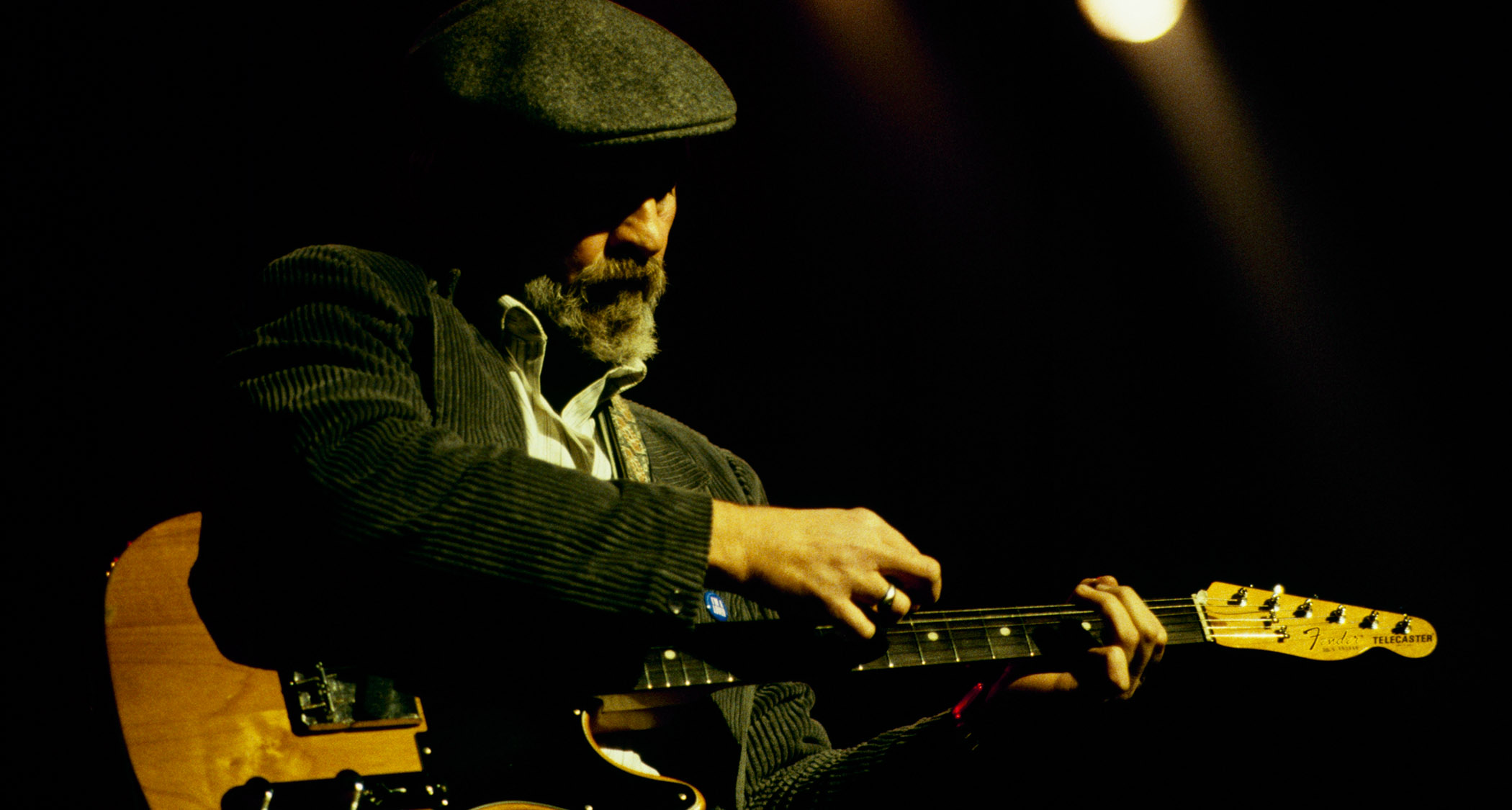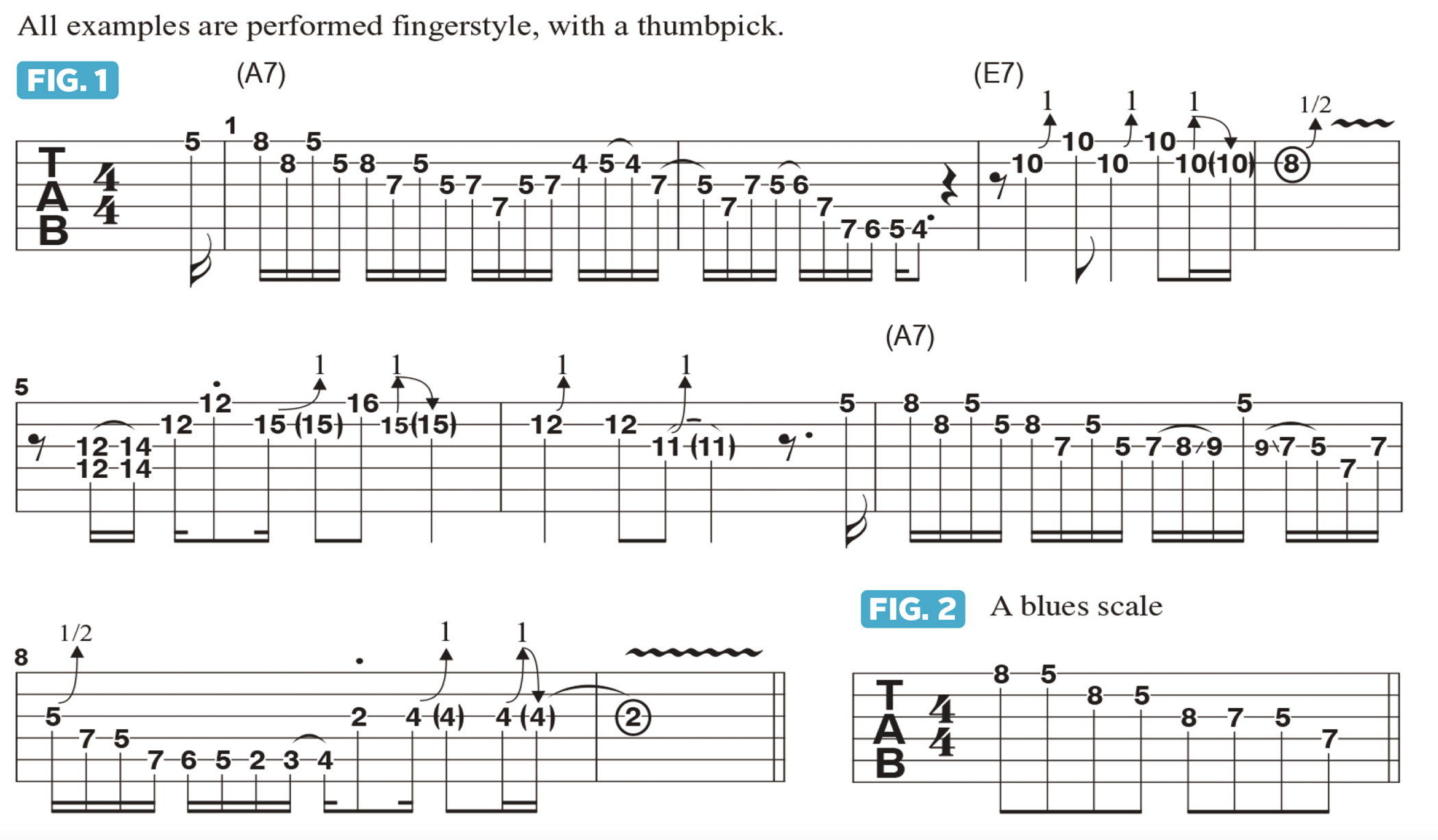
In my last column, I demonstrated a Jimmy Reed-inspired eight-bar rhythm figure played with a funky, syncopated half-time feel, moving from the I (one) chord, A7, to the V (five) chord, E7, and back to the I, A7.
As I almost always do, I perform the part with fingerpicking, using a thumbpick in conjunction with my first two fingers. I’d now like to demonstrate an improvised solo over this eight-bar rhythm part.
This eight-bar form consists of two bars of A7, followed by four bars of E7, and then wraps up with two bars of A7.
Very often, I like to “follow” the chords when soloing; this means that I base my lines on scales and/or arpeggios that relate directly to each of the chords in the progression.
Figure 1 presents an improvised eight-bar solo. In bars 1 and 2, over A7, the lines are based primarily on the A blues scale (A, C, D, Eb, E, G), with the inclusion of C#, the major 3rd.
This is a common device in blues soloing, as it strengthens the connection between the solo and the related dominant 7 chord, which in this case is A7 (A, C#, E, G).

In bar 3, when the chord changes to E7 (E, G#, B, D) I move to lines based on E minor pentatonic (E, G, A, B, D) with the inclusion of the major 3rd of E, G#, in combination with some phrases based on E major pentatonic (E, F#, G#, B, C#).
Figure 2 illustrates the A blues scale in 5th position, which is the basis for the first lick in the solo.

In Figures 3 and 4, you can see that, for this first phrase, I alternate the order of the notes, starting on A and moving up a minor 3rd to C, and then down a 4th to G, then back up to A.
This up-down-up contour then continues through the A minor pentatonic scale in this position.

The up-down-up approach can also be applied to the A blues scale (A, C, D, Eb, E, G), as demonstrated in Figure 5. Here, the Eb note (the b5) is included in the pattern, which serves to add a slight change to the contour of the line.
At the end of bar 1 of Figure 1, I move down to 4th position to play Eb on the B string. This move is focused on in Figure 6. After sounding the Eb at the beginning of bar 1, I shift back up to 5th position and then finish the line with the ascending chromatic row B-C-C# on the A string.

Figure 7 represents the shift to E7 and E minor pentatonic, and Figure 8 illustrates a lick I learned from the great Roy Buchanan, starting with a double-stop hammer-on on the middle two strings, from D and G up to E and G#.
This is followed by an oblique bend: I bend D on the B string up to E while holding a G# on the high E string.

Figure 9 represents the way the solo wraps up, with a simple E major pentatonic lick followed by a restatement of the phrase that I began with.
This will be the last installment of Tele-Pathy for now, so I hope these columns have been helpful to you. Thanks for reading!







